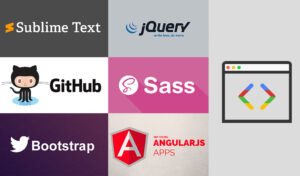Combining Python and D3.js to Create Dynamic Visualization Applications
Combining Python and D3.js to create dynamic visualization applications. D3.js is a powerful library that enables you to build customized visualizations for any kind of storytelling you could imagine on the web. Data analysis, on the other hand, is often rooted in a linear perspective, as it involves a step-by-step breakdown to understand and solve a problem. However, when done correctly, data analysis allows users to account for minute details and idiosyncrasies often missed when viewing the whole picture. Combining a data-driven approach with a more visual approach creates a holistic problem-solving and analysis process that blends linear and non-linear perspectives.
In this demonstration, I will show how to create a data processing back-end in Python while maintaining a visual front-end in D3.js to build an effective application. Additionally, we will add controllable features that allow communication between the front-end and back-end based on user inputs. We will use the Python module ‘Flask’ as the intermediary between the back-end and the front-end. The D3 visualization I have chosen is the collapsible bar chart example created by Mike Bostock. The structure of the visualization will involve HTML, JS, and some Jinja code.
Defining the Structure of the Application
The backend in Python requires more steps. Below are the key actions we will take:
- Import necessary packages, define the Flask application, and create a data store.
- Generate data to send to the front-end for the home page.
- Convert the data into JSON format for D3.js and send it to the front-end.
The final application file is available here.
I hope you enjoyed this blog on combining Python and D3.js to create dynamic visualization applications. To learn more, visit HawksCode and Easyshiksha for more learning.
Free Online Courses with Internship CertificateThe backend in Python requires more steps. Below are the key actions we will take:
- Import necessary packages, define the Flask application, and create a data store.
- Generate data to send to the front-end for the home page.
- Convert the data into JSON format for D3.js and send it to the front-end.
The final application file is available here.
I hope you enjoyed this blog on combining Python and D3.js to create dynamic visualization applications. To learn more, visit HawksCode and Easyshiksha for more learning.
Free Online Courses with Internship CertificateOur first step is to design the front-end, which will be a basic HTML page (“index.html”) that will host our D3 visualization and the form for user input. The user will submit a country and year selection, and the final HTML will look like this:
<input name=”Country_field” placeholder=”Enter country name” > <input type=”number” name=”Year_field” placeholder=”Enter Year” > <input type=”submit” value=”Submit Country and Year” > </form>
Next, we will create two divisions: one to host the production data graph on the left and another to host the loss data on the right. These divisions will also display the selected country and year. We will assign IDs to the graphs and use Jinja to render the country name and year dynamically. For the loss data, we will repeat the same steps.
Creating the Backend in Python
The backend in Python requires more steps. Below are the key actions we will take:
- Import necessary packages, define the Flask application, and create a data store.
- Generate data to send to the front-end for the home page.
- Convert the data into JSON format for D3.js and send it to the front-end.
The final application file is available here.
I hope you enjoyed this blog on combining Python and D3.js to create dynamic visualization applications. To learn more, visit HawksCode and Easyshiksha for more learning.
Free Online Courses with Internship Certificate



